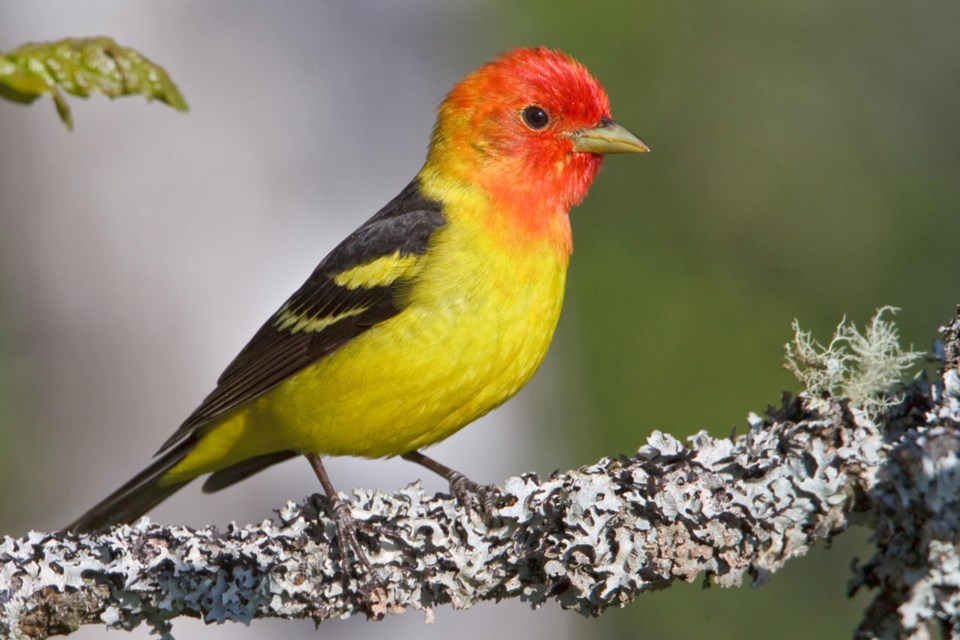By May 10 many, but not all, of our summering species have arrived from their winter quarters. I was out and about in various locations on Sunday, May 5, and recorded seven of the eight warbler species that visit us to breed. Wilson’s warbler was present in a number of locations and likely there had been a large overnight arrival of the species. This species is a skulker in dense undergrowth so familiarity with its song is helpful in locating it. The final arriving warbler will be the yellow warbler, with the first arrivals usually after May 10. The warblers will spend the summer with us, raise a family, and begin to head south again in August with the last ones present until about Sept. 21. Rarely a warbler will spend the entire winter on the Sunshine Coast.
Another abundant summer family of birds is the vireos. We have four species and one, Hutton’s, is a year round resident on the Sunshine Coast. It has been very vocal during March and April indicating how common it is, but its song is now tapering off just as the other members of the family arrive. From now until birdsong ceases in July the song of warbling vireo will be a dominant sound in our low elevation mixed second growth forests. The song is an enthusiastic warbling from an obscure and anonymous little brown bird and few people will actually observe the songster.
Two species that are anything but dull and obscure are the western tanager and the black-headed grosbeak and both arrive in the first few days of May. The tanager is the only B.C. member of the largely tropical family that contains some of the world’s most colourful birds. Our tanager is a gaudy concoction of black, white, yellow and orange and people do notice this bird when they see it! It is a common summer resident on the Sunshine Coast and also quite vocal; listen for its “pit-er-ik” call note. Male black-headed grosbeaks are black, white and burnt gold and often visit bird feeders allowing good looks at them. Don Roberts in Langdale reported one on May 2, a date on which this species often first appears at his feeder.
Springtime, when birds are migrating and generally moving around, usually brings some rarer species to the Sunshine Coast. This year we have had visits from yellow-headed blackbird (Peter Telfer in Gibsons), sora (Robert Allen in Wilson Creek), Brewer’s sparrow (Kaiden Bosch in Egmont) and calliope hummingbird and sandhill crane (John Hodges, both at Wilson Creek estuary). Contact Tony at [email protected] or 604-885-5539 to report your sightings or ask a question. Good birding!



